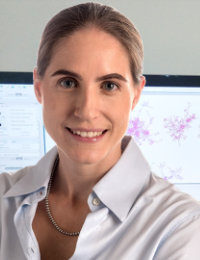Abstract: Recent technological advances have allowed us to map chromatin conformation and uncover the spatial organization of the genome inside the nucleus. These experiments have revealed the complexities of genome folding, characterized by the presence of loops and domains at different scales which can change across development and cell types.
Different types of approaches have been employed to describe 3D genome organization, which can be broadly divided into polymer physics models, constraint based models and statistical approaches.
An increasingly popular representation of chromatin is given by networks, in which genomic fragments are the nodes and connections that represent experimentally observed spatial proximity of two genomically distant regions. This formalism, applied to promoter centered chromatin interaction networks generated by promoter capture HiC, has allowed us to consider a variety of chromatin features in association with the 3D structure, leading to novel biological insight on gene regulation (Pancaldi et al. Genome Biology 2016).
We thus propose network representation as the tool to bridge the different scales of chromatin organization and have developed an online chromatin network interaction viewer and an R package building on this framework.
In the present work, we characterize DNA replication in a 3D chromatin context, generating novel maps of replication origins in mouse embryonic stem cells under normal conditions and during DNA replication stress. These origins are then contextualized by projection on a promoter-centred chromatin contact network defined at a few kb resolutions. We find that replication origins with similar efficiency interact with each other preferentially, suggesting that DNA replication takes place in the context of hierarchical multi-scale structures spanning tens of megabases and even bridging chromosomes. More specifically, origins that interact with others tend to replicate earlier and with higher efficiency. The changes of origin activation patterns in normal and stressed conditions support a stochastic model of activation in which both local and global chromatin properties modulate efficiency.
Venue: Aula de Teleensenyament, B3 Building
Click here to see the full presentation
Bioinfo4Women seminars / SORS
Chromatin 3D organization revealed by chromatin networks: gene-regulation, replication, and beyond

Speaker:
Vera Pancaldi
Epigenomics and network modelling of heterogeneity in immuno-oncology lab leader at CRCT
